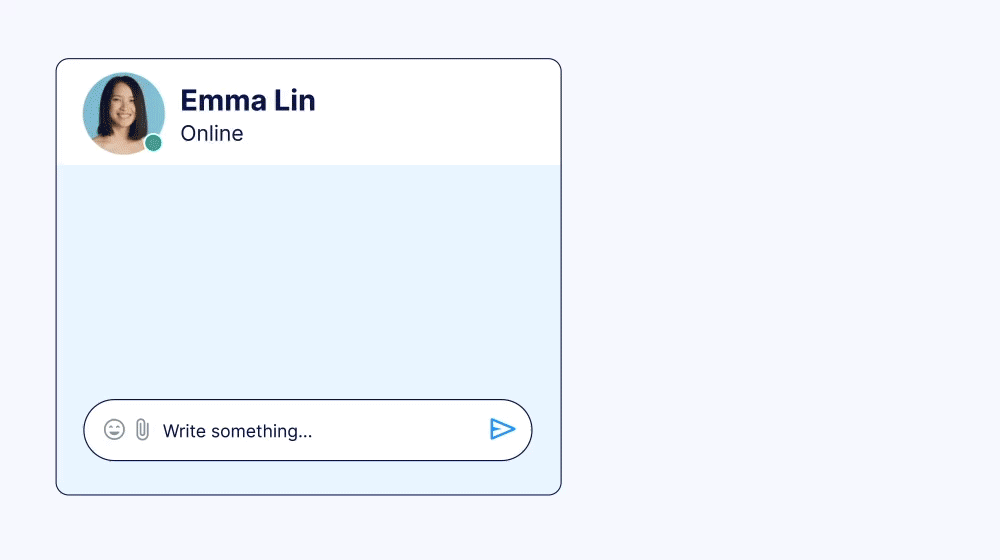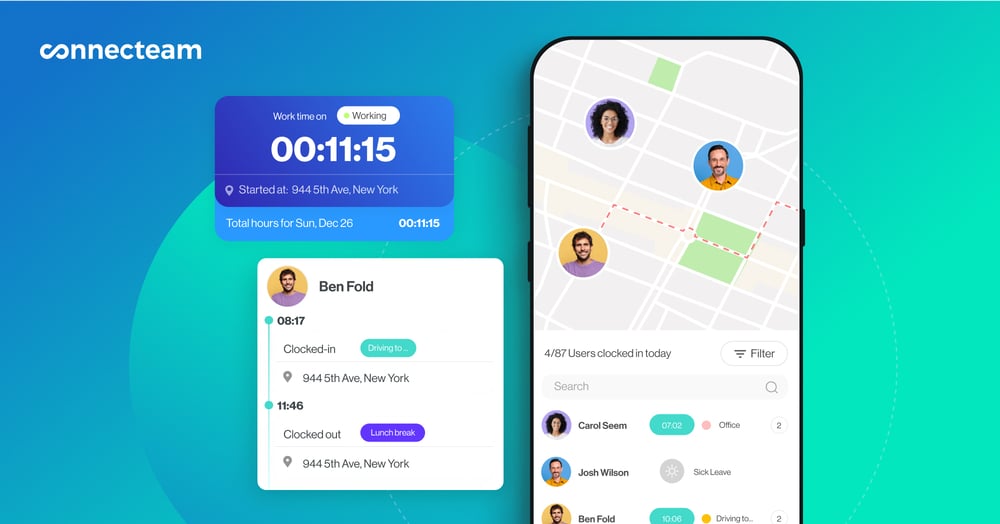Starting on August 26, 2024, a new law in Australia will give employees the Right to Disconnect from work-related communications outside their regular working hours.
We’ll explore what this law entails, its implications for your business, and how to prepare effectively using the right employee management software.
What You Need to Know About the Right to Disconnect
The Right to Disconnect law is designed to help employees maintain a healthy work-life balance by ensuring they don’t have to be available 24/7.
Here’s a detailed look at what the law involves:
Key Dates:
- August 26, 2024: The law takes effect for businesses with more than 15 employees.
- August 26, 2025: The law takes effect for small businesses.
Employee Rights:
Employees can refuse to monitor, read, or respond to work-related communications outside their working hours. This includes all forms of communication, such as emails, calls, texts, and messaging services like Teams and WhatsApp.
Did You Know?
Under the new law, employers can still send communications outside working hours, but employees are only obligated to respond if it is reasonable to do so. This approach helps maintain flexibility for urgent matters while protecting employees’ right to disconnect.
Reasonableness Criteria:
Several factors determine whether an employee’s refusal to respond is reasonable:
- Reason for Contact: Is the contact urgent or necessary for immediate business needs?
- Mode of Contact: Is it a phone call, text, or email? The method of communication can impact the level of disruption.
- Compensation: Is the employee compensated for being available outside regular hours?
- Role and Responsibility: The nature of the employee’s role and their level of responsibility.
- Personal Circumstances: Factors such as family or caring responsibilities.
Dispute Resolution:
Disputes should first be resolved internally through discussions. If unresolved, conflicts can be escalated to the Fair Work Commission, which can issue orders to prevent unreasonable contact or refusal.
Protected Rights:
The right to disconnect is protected under the Fair Work Act, meaning employees are safeguarded against adverse actions for reasonably refusing after-hours contact.
What It Means for Your Business
Rethink Communication Practices
With the new law in place, you need to rethink your approach to communication to avoid unnecessary after-hours contact. This involves scheduling messages and tasks during working hours and setting clear expectations for out-of-hours communication, especially for international operations.
Action Item: Implement Communication Protocols
- Use scheduling tools to send messages during working hours.
- Establish protocols to manage after-hours interactions effectively.
Review and Update Employment Contracts
Your employment contracts must be updated to reflect the new rights and clearly outline expectations regarding after-hours communication. This ensures all employees understand the boundaries and their rights under the new law.
Action Item: Update Employment Contracts
- Ensure all contracts reflect the new rights and outline expectations for after-hours communication.
- Include compensation details for roles that require availability outside regular hours to demonstrate when refusals are unreasonable.
Develop and Communicate Policies
You need to develop and communicate clear workplace policies specifying what constitutes reasonable after-hours contact. This helps ensure that all employees are aware of their rights and the company’s expectations.
Action Item: Create and Communicate Policies
- Develop clear policy about out-of-hours contact, specifying what is considered reasonable and unreasonable.
- Update recruitment policies to set clear expectations for new hires, especially for roles involving international communication or variable schedules.
Training and Raise Awareness
It’s essential to educate both managers and employees about the Right to Disconnect. Managers should learn how to respect this right, and employees need to understand their new rights and how to handle after-hours communication appropriately.
Action Item: Provide Training Sessions
- Educate managers on the importance of respecting employees’ right to disconnect.
- Hold training sessions for employees to understand their rights and how to handle work-related communications outside regular hours.
Establish Clear Guidelines
To avoid misunderstandings, you must establish clear guidelines for what constitutes reasonable after-hours contact. These guidelines should be easily accessible and well-communicated to all employees.
Action Item: Define and Communicate Guidelines
- Create guidelines that define what constitutes reasonable after-hours contact.
- Communicate these guidelines effectively to all employees and ensure they are readily accessible.
How Connecteam Can Help
Connecteam is an all-in-one employee management platform built especially for teams that are not sitting in front of a computer. More than 40,000 businesses streamline their day-to-day operations, enhance communication, and improve connectivity with Connecteam daily.
Connecteam helps you keep your businesses compliant by providing tools designed to respect employees’ right to disconnect while maintaining operational efficiency.
Best of all, Connecteam is 100% free for life for small companies with up to 10 employees, while paid plans for larger businesses start at only $29 for 30 users.
Want to see Connecteam in action? Book a demo now!
Here’s how Connecteam will help you effortlessly manage your workforce while respecting their new rights.
Scheduled Messaging: Use Connecteam’s Chat to schedule messages to be sent during working hours, avoiding the disturbance of employees after hours. This feature helps ensure that communications are delivered at appropriate times, promoting a better work-life balance.

Task and Project Management: Assign tasks and set deadlines within regular working hours using Connecteam’s Task Management feature. Real-time updates on task statuses keep projects on track and reduce the need for after-hours follow-ups, making task management more efficient.
Time Management: Monitor working hours accurately with Connecteam’s Time Tracking features. Track overtime to prevent excessive working hours and maintain compliance with the new law, helping manage employee availability and workload distribution effectively.

Policy Management: Easily create, update, and share company policies regarding after-hours communication within the app using Connecteam’s Knowledge Base. Employees have constant access to these policies, ensuring they understand what constitutes reasonable after-hours contact.
Training Modules: Develop and distribute training sessions for managers and employees on respecting the right to disconnect and handling after-hours communication with Connecteam’s Training and Onboarding modules. Ensure everyone is informed and aligned with the new regulations.
Beyond compliance, Connecteam enhances overall business operations with tools to manage employee rosters, streamline team communication, facilitate onboarding processes, and integrate payroll management—all within one platform. Use Connecteam to boost productivity, enhance employee engagement, and ensure your business runs smoothly.
Get started with a free 14-day trial and try Connecteam yourself. No credit card needed.
Conclusion
The Right to Disconnect law represents a significant shift towards improving work-life balance for Australian employees. Prepare now and leverage tools like Connecteam so you can navigate these changes effectively and ensure compliance.
By following this comprehensive guide, your business will be well-prepared to comply with the new Right to Disconnect law, ensuring a smoother transition and fostering a healthier work environment for all employees.
Ready to make the switch?
Try Connecteam for free and see how our platform can help you manage these changes with ease.
FAQs
What is the Right to Disconnect in Australia?
The right to disconnect in Australia, starting on August 26, 2024, allows employees to disengage from work communications and duties outside of their regular working hours, ensuring a better work-life balance. This law initially applies to non-small business employers and extends to small business employers a year later.
What is the Employment Rights Act in Australia?
The primary legislation governing employment rights in Australia is the Fair Work Act 2009. This Act outlines the rights and responsibilities of employers and employees and includes:
- National Employment Standards (NES): Sets minimum employment standards such as maximum weekly hours, leave entitlements, and flexible working arrangements.
- Modern Awards: Provides industry or occupation-specific minimum standards, including pay rates and working conditions.
- Enterprise Agreements: Agreements made at the enterprise level between employers and employees regarding employment terms and conditions.
- Unfair Dismissal Protections: Offers protections for employees against unfair dismissal.

